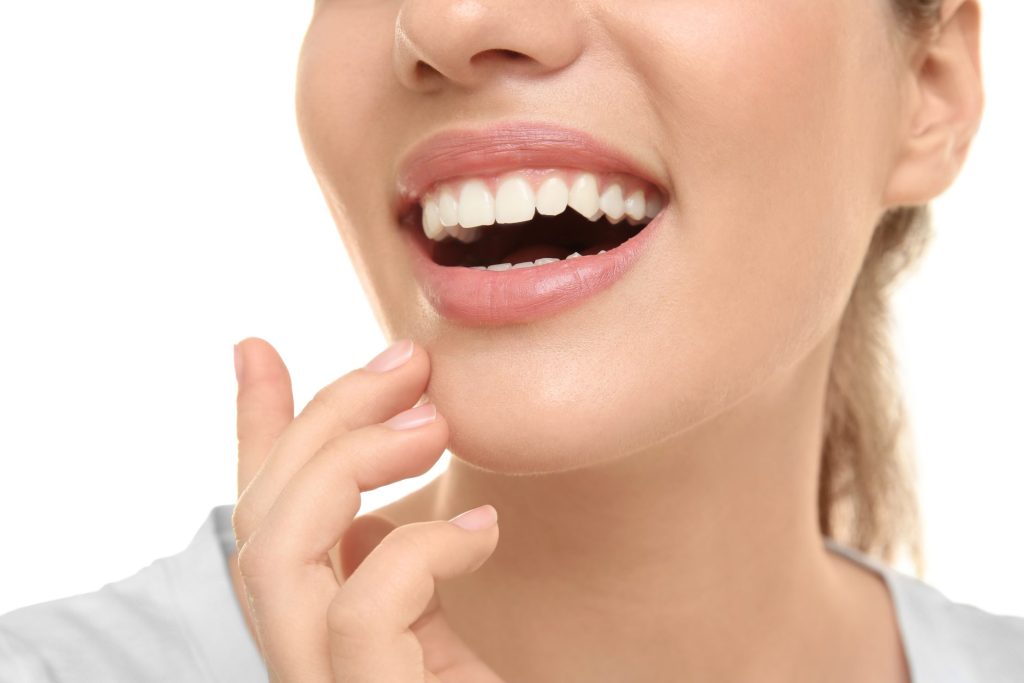Wanting to improve your smile is a universal desire. A sparkling, even smile boosts your confidence and helps you display a professional and well-kept appearance to the world. But it’s not as easy as just deciding to restore your smile and settling into the dentist’s chair. You’ll need to start by picking a specific treatment for improving the appearance of your teeth.
If you have healthy but discolored or misaligned teeth, dental bonding and veneers are two good options for changing your smile. While they are often mistaken for each other, there are some important differences between them. Make sure you’re choosing the right restoration option for your teeth with this guide to veneers and dental bonding services.
Similar But Not the Same
Bonding and veneers do have a few things in common that lead to them being confused for each other. Both only work well on otherwise healthy teeth that have minor visible imperfections like stains, discoloration, being misshapen, or being slightly out of alignment. Neither treatment takes very long to add to the teeth, and both last for multiple years before needing replacement. They can work well for the same types of patients. Yet they are two distinct dental procedures relying on different materials and offering different levels of restoration.
The Basics of Dental Bonding
Dental bonding is one of the quickest and simplest ways to improve your smile that goes beyond just cleaning and whitening. A resin material is brushed onto the surface of the tooth, then it is cured with a UV light until it forms a pearly surface that’s bonded tightly to the natural tooth surface. As you may guess, this method is limited in its ability to change the shape or size of the tooth. It does work well for disguising cracks or small chips and covering up any stains that can’t be treated with whitening.
The material is almost undetectable except by dental professionals. It’s a subtle change since the natural shape of the tooth is only minimally altered. No one around you will be able to guess you’ve had more than just whitening done to your teeth after the bonding is completed.
How Veneers Work
Veneers are a slightly more advanced and extensive form of restoration work. Thin and translucent pieces of material are custom designed to fit your teeth in need of covering. Then these pieces are attached to the tooth with a safe but strong dental adhesive cement. It’s almost similar to an acrylic nail being attached over your natural fingernail, but involving the teeth instead.
Since they’re solid covers attached to the natural teeth, veneers can dramatically change the appearance of the shape or alignment of each tooth. The skill of the dentist largely determines how good the final installation looks because each veneer needs to be colored and shaped to fit your natural smile. Veneers are often added over the entire visible part of the smile to create a complete overhaul all at once.
Dental Bonding vs Veneers
In most cases, dental bonding is a more affordable choice than veneers. However, this is largely reflected in the treatment’s more limited ability to change the appearance of your smile. Bonding is quick but limited to minor visual improvements. The higher cost of the veneers is due to the custom shaping and the more extensive installation process.
Veneers tend to last longer than dental bonding as well. Bonding wears off with time as your chewing habits slowly wear the resin away. You will eventually need to have your teeth resurfaced, especially if you want to add more bonding or switch to veneers. Veneers can last a decade or longer with proper care, while bonded teeth generally need an update after five years or so.
If you only want to spend a limited time in your dentist’s office, bonding is a quick way to get smile improvements. The process is generally completed in just one visit. Dental veneers need two or more visits because you’ll need to have the custom pieces designed and fitted first, then actually installed with the potential for minor tooth reshaping first. If you’ve got a big event coming up like a wedding or speech, bonding will offer the quickest results.
Neither veneers or bonding automatically cause damage to the teeth or require a lot of tooth shaping. Veneers require a little more tooth shaping than bonding in most cases. You may have a risk of decay if you skip your brushing habits after getting veneers attached.
Bonding creates a more subtle appearance and doesn’t dramatically change your smile. If you want more than just whitening and stain coverage, you’ll likely want the bigger changes brought on by veneers. You can reshape or completely change the appearance of your smile with them, even altering the appearance of your gum line just with careful placement.
Can Bonding and Veneers Be Combined?
The same tooth can’t have both bonding and veneers installed on it, at least not at the same time. It’s generally fine to start with bonding and then remove the remaining resin later and add veneers instead. Fewer patients transition from veneers to bonding, but it is possible in most cases with proper preparation. It’s perfectly fine to combine bonding and veneers across different teeth for smile improvements based on the restoration needs of each tooth. Bonding can be used to whiten and smooth teeth at the edges of the smile where they are less visible and then veneers applied to the most visible front teeth for maximum impact.
Camelot Dental Group is standing by and ready to help you with both dental bonding and veneers. Schedule your consultation today to find out what cosmetic procedures we recommend to boost your smile and restore your self-confidence. There’s something for everyone who wants a brighter or straighter smile without undergoing extensive work in the dentist’s chair.




